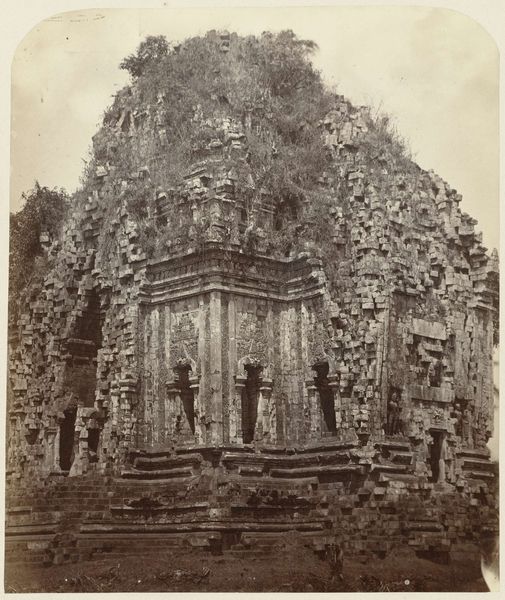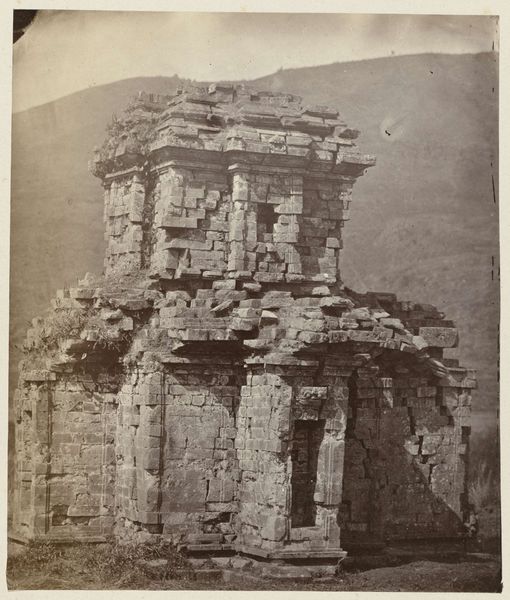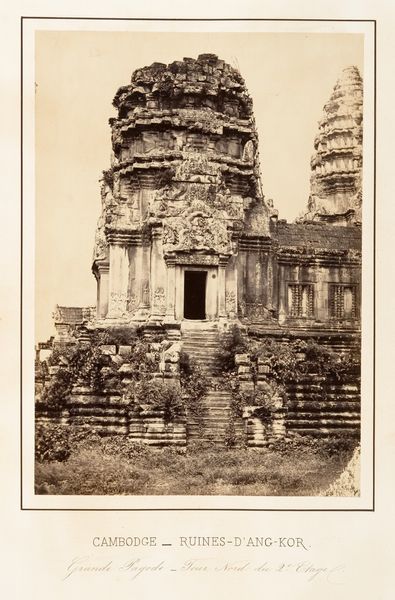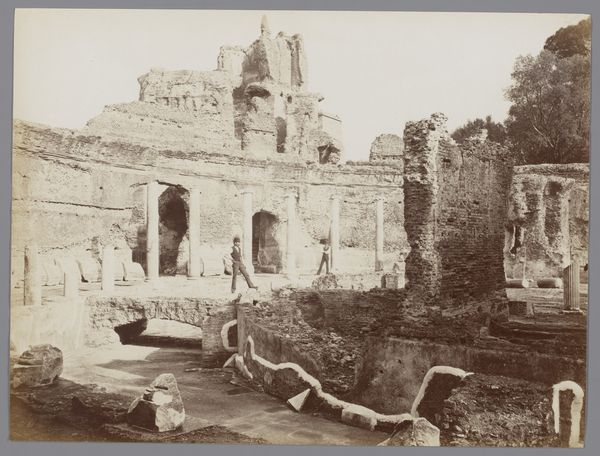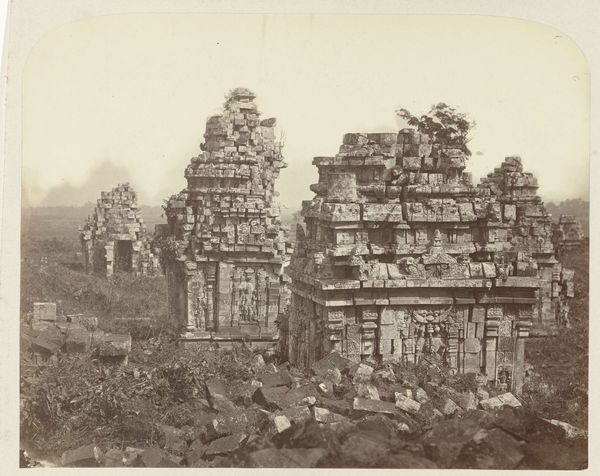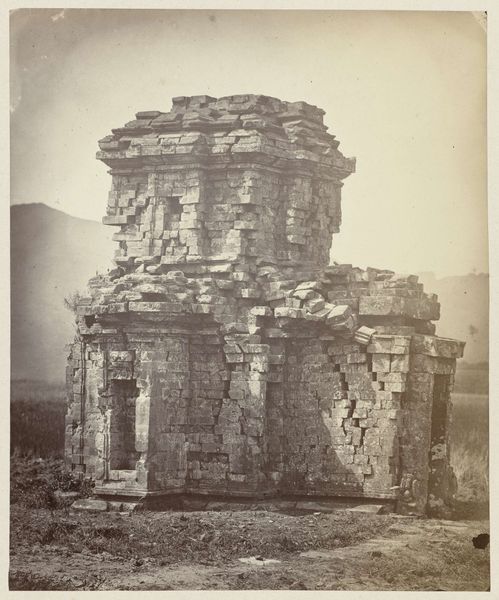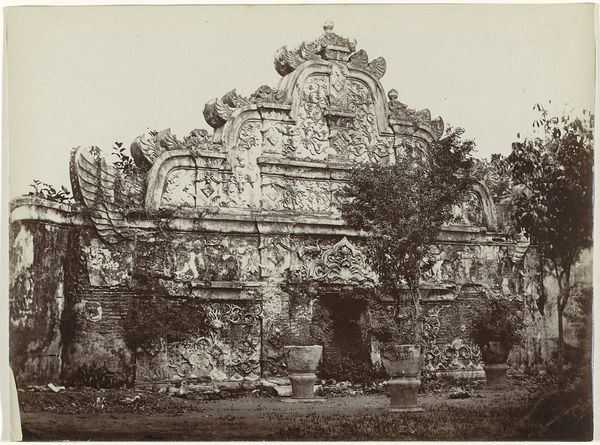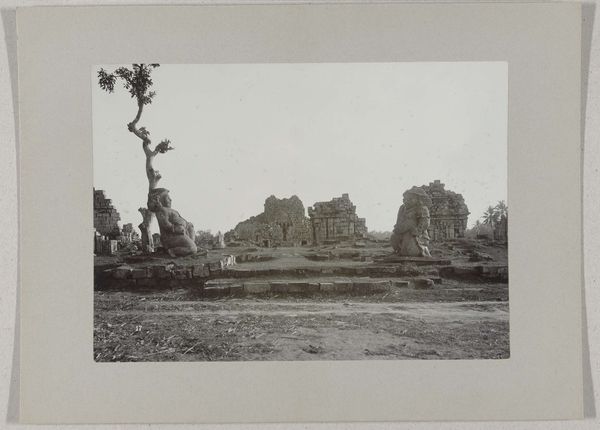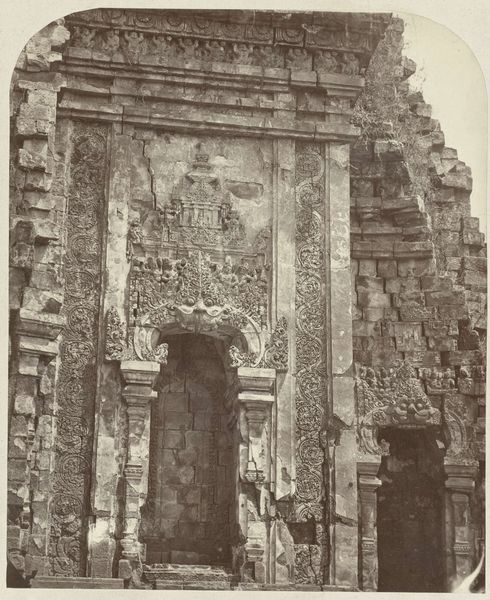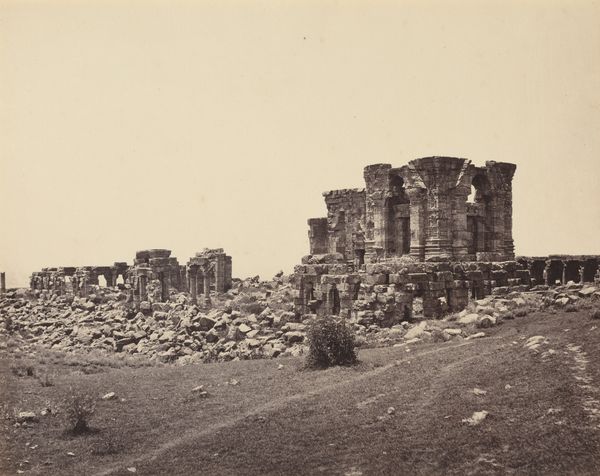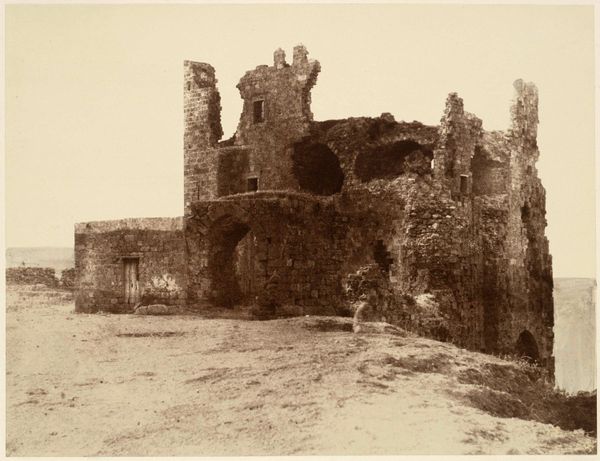
Candi Sewu (Temple complex)(Buddhist) main temple. Bokoharjo, Yogyakarta district, D.I. Yogyakarta province, 8th -9th century. Possibly 1865 - 1867
0:00
0:00
photography, architecture
#
asian-art
#
landscape
#
photography
#
ancient-mediterranean
#
architecture
Dimensions: height 340 mm, width 290 mm
Copyright: Rijks Museum: Open Domain
Curator: This photograph, possibly taken between 1865 and 1867 by Isidore Kinsbergen, captures the Candi Sewu temple complex, a Buddhist site located in the Yogyakarta district. Editor: It gives me an immediate feeling of poignant decay. Look at the crumbling stones, how nature reclaims the architecture… There's a certain romanticism in ruin, isn't there? Curator: Indeed. But let's consider the temple's symbolic significance. Candi Sewu, meaning "Temple of a Thousand," represents the cosmic mountain, Meru, in Buddhist cosmology. Each element, even in its ruin, evokes ideas about spiritual elevation. Editor: While the symbolism speaks to one aspect, the actual material tells another story. Imagine the labor required to quarry, transport, and carve each individual block. Consider the political power necessary to mobilize that workforce. It speaks of empire. Curator: Yes, and we mustn't forget that these temples also functioned as visual mnemonics. Each carving and placement aided in memorizing and enacting complex rituals, ensuring cosmic harmony. These aren't simply piles of stone. Editor: Absolutely, and I am struck by the layers visible in this photograph. Kinsbergen uses his materials, glass plate negatives and albumen prints, to show us the enduring marks made by both human effort and environmental conditions, a reminder of temporality itself. Curator: Consider, too, how these architectural ruins still function within collective memory, representing Java’s rich spiritual past for its contemporary citizens. They exist in dreams, narratives and shared histories, becoming potent symbols of cultural continuity. Editor: For me, the photo also brings to light forgotten hands: the nameless artisans, the manual labor now overgrown and almost consumed. Curator: Kinsbergen’s photograph, inadvertently, freezes a specific moment in time, inviting reflection on our understanding of civilizations. Editor: It seems to point not only to what has crumbled away, but to what has also endured.
Comments
No comments
Be the first to comment and join the conversation on the ultimate creative platform.
